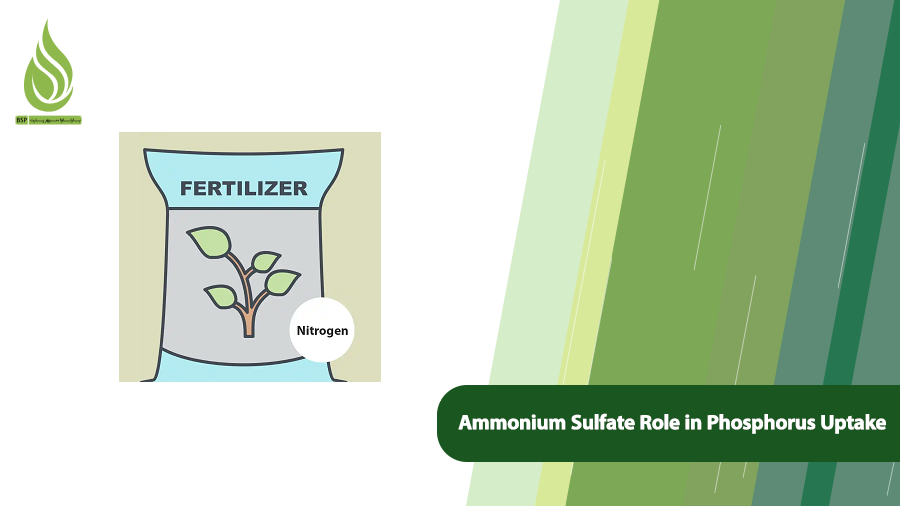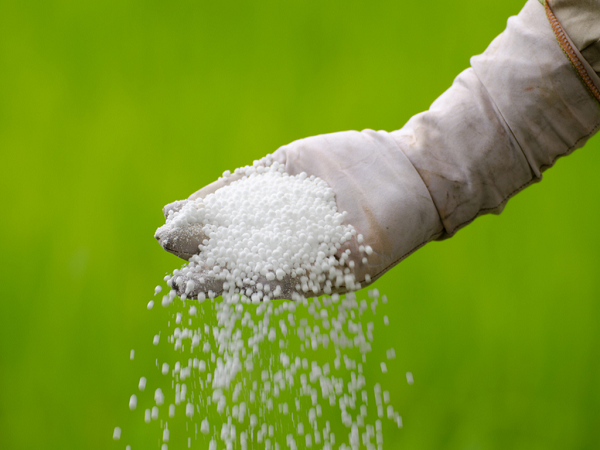
The Role of Ammonium Sulfate in Potassium and Phosphorus Uptake
Ammonium sulfate is a cornerstone of modern agriculture, valued for its ability to enhance the uptake of critical nutrients like potassium and phosphorus in plants. As a chemical fertilizer, it delivers essential elements that support robust plant growth and improve crop yields. This article delves deeply into how ammonium sulfate facilitates the absorption of potassium and phosphorus, its mechanisms, benefits, and best practices for application. By understanding its role, farmers can optimize nutrient management, boost productivity, and promote sustainable farming practices.
Ammonium Sulfate: Key Benefits for Plants & Soil
Ammonium sulfate fertilizer supplies vital nitrogen (21%) and sulfur (24%). Nitrogen powers photosynthesis, growth, and plant vigor. Unlike some fertilizers, its nitrogen binds tightly to soil, reducing leaching and providing a steadier supply, especially in sandy soils or heavy rain areas.
Sulfur is crucial for amino acids, vitamins, and enzymes, and helps plants use other nutrients better. With less sulfur pollution reaching farms today, ammonium sulfate directly tackles this common deficiency. It also improves soil conditions to help plants absorb phosphorus and potassium.
Its chemical makeup (NH₄)₂SO₄ makes it slightly acidic. This is great for alkaline soils, lowering pH to make nutrients more soluble and available to roots.
Why Farmers Choose Ammonium Sulfate:
- Builds Disease Resistance: Adequate sulfur and nitrogen strengthen plants against pests and diseases.
- Boosts Growth Fast: Nitrogen fuels rapid leaf and stem development, critical for crops like corn and wheat early on.
- Strengthens Plants: Builds better root systems (for water/nutrient uptake) and stronger stems (supporting heavier yields).
- Improves Crop Quality: Leads to better-tasting, more nutritious fruits, grains, and vegetables.
- Quick Results: Highly soluble for fast plant uptake when needed most.
- Corrects Alkaline Soil: Lowers high soil pH, optimizing nutrient availability.
- Versatile: Works for field crops, orchards, and greenhouses.
- Environmentally Sound: Low leaching risk protects groundwater better than many nitrogen fertilizers.

How Ammonium Sulfate Enhances Phosphorus and Potassium Uptake
Ammonium sulfate improves the absorption of phosphorus and potassium through several mechanisms. Its sulfur content plays a pivotal role by enhancing soil structure and nutrient solubility. In soils with high clay content or poor structure, nutrients like phosphorus can become bound to soil particles, making them unavailable to plants. Sulfur helps break these bonds, releasing phosphorus into a form that roots can absorb.
The ammonium component also contributes by stimulating microbial activity in the soil. Beneficial bacteria and fungi mineralize organic phosphorus, converting it into inorganic forms that plants can use. This microbial activity is particularly important in soils with low organic matter, where phosphorus availability is often limited.
In alkaline or saline soils, high pH or sodium levels can inhibit potassium uptake. Ammonium sulfate counters this by reducing and adjusting soil pH and sodium concentration, creating a more balanced ionic environment. This allows potassium to move more freely to plant roots. Additionally, the localized acidity created by ammonium sulfate around the root zone helps solubilize phosphorus, which is often bound to calcium or iron in alkaline soils.
These combined effects: improved soil structure, enhanced microbial activity, and optimized pH, make ammonium sulfate a powerful tool for increasing nutrient availability. By facilitating better uptake of potassium and phosphorus, it reduces the need for excessive fertilizer applications, lowering costs and environmental impact.
Why Are Potassium and Phosphorus Critical for Plants?
Potassium and phosphorus are among the most essential macronutrients for plant growth and development. Their roles are multifaceted and indispensable:
Potassium (K):
- Stomatal Regulation: Potassium controls the opening and closing of stomata, the tiny pores on leaves that regulate gas exchange and water loss. This helps plants manage water efficiently, especially under drought conditions.
- Stress Resistance: Potassium strengthens cell walls and enhances tolerance to environmental stresses, such as drought, heat, and cold. It also helps plants resist diseases and pests.
- Crop Quality: Potassium improves the size, color, and flavor of fruits and vegetables, directly impacting marketability and consumer satisfaction.
Phosphorus (P):
- Root Development and Cell Division: Phosphorus is critical for root growth and cell division, supporting the establishment of strong root systems that improve nutrient and water uptake.
- Energy Production: Phosphorus is a key component of ATP (adenosine triphosphate), the molecule that powers cellular processes. Adequate phosphorus ensures plants have the energy needed for growth and reproduction.
- Flowering and Fruiting: Phosphorus accelerates flowering and fruit development, leading to earlier harvests and higher yields.
A deficiency in either nutrient can stunt growth, reduce yields, and lower crop quality. For example, potassium deficiency may cause leaf scorching or poor fruit development, while phosphorus deficiency can lead to weak roots and delayed flowering.
Factors Hindering Potassium and Phosphorus Uptake
Even when potassium and phosphorus are present in the soil or added through fertilizers, plants may struggle to absorb them due to several factors:
- Inappropriate Soil pH: High pH in alkaline soils can cause phosphorus to bind with calcium or iron, forming insoluble compounds. Similarly, potassium uptake is reduced in highly acidic or alkaline conditions.
- Excess Calcium or Iron: In some soils, high levels of calcium or iron can lock up phosphorus, making it unavailable to plants.
- Soil Salinity: High salt levels, particularly sodium, can interfere with potassium uptake by competing for absorption sites on roots.
- Low Organic Matter: Soils with low organic content often lack the microbial activity needed to mineralize phosphorus and make it available to plants.
- Improper Fertilizer Use: Applying fertilizers incorrectly, such as using insoluble forms or overapplying certain nutrients, can reduce the effectiveness of potassium and phosphorus fertilizers.
Ammonium sulfate addresses these challenges by optimizing soil conditions and enhancing nutrient availability, making it an effective solution for farmers facing nutrient uptake issues.

Mechanisms of Ammonium Sulfate in Boosting Nutrient Uptake
Ammonium sulfate employs several mechanisms to improve soil conditions and nutrient absorption:
- pH Adjustment: In alkaline soils, ammonium sulfate lowers pH, creating an environment where phosphorus and potassium are more soluble and accessible. This is particularly effective in regions with naturally high soil pH, such as arid or semi-arid areas.
- Soil Structure Improvement: Sulfur enhances soil aggregation, improving aeration and water infiltration. This allows roots to access nutrients more easily.
- Microbial Activation: The ammonium and sulfur in the fertilizer stimulate beneficial soil microbes, which mineralize organic phosphorus and make it available to plants.
- Sodium Reduction: In saline soils, ammonium sulfate reduces sodium concentration, improving the ionic balance and facilitating potassium uptake.
- Localized Acidity: Around the root zone, ammonium sulfate creates a slightly acidic environment, solubilizing bound phosphorus and making it more accessible.
- Reduced Fertilizer Dependency: By enhancing nutrient uptake, ammonium sulfate reduces the need for additional potassium and phosphorus fertilizers, lowering costs and environmental impact.
These mechanisms collectively increase the mobility and availability of potassium and phosphorus, ensuring plants can absorb these nutrients efficiently.
Key Tips for Using Ammonium Sulfate Effectively

To maximize the benefits of ammonium sulfate, farmers should adhere to the following best practices:
Optimal Timing
Apply ammonium sulfate during land preparation or the vegetative growth phase. During land preparation, it lowers soil pH and enhances nutrient solubility, setting the stage for healthy plant growth. During vegetative growth, it provides nitrogen for rapid development, and this is one of the most common fertilization mistakes.
Application Rates
The required amount of ammonium sulfate varies by soil type and crop. Light, sandy soils with good aeration may need less, while heavy, clay-rich soils may require more. Crops like corn, wheat, and rice often demand higher rates to support their vigorous growth. Soil testing is essential to determine precise application rates and avoid overuse.
Avoid Mixing with Alkaline Fertilizers
Ammonium sulfate should not be mixed with calcium-based or other alkaline fertilizers, as this can neutralize its acidic properties and reduce its effectiveness. Farmers should consult fertilizer compatibility guides to ensure proper use.
Timing with Irrigation
Applying ammonium sulfate alongside irrigation enhances nutrient absorption and prevents nitrogen loss. Water helps dissolve the fertilizer, making it immediately available to plant roots.
Combining with Other Fertilizers
Ammonium sulfate pairs well with phosphorus and potassium fertilizers, such as superphosphate or potassium sulfate. Combining these fertilizers creates a synergistic effect, allowing plants to access multiple nutrients simultaneously. This is particularly beneficial during early growth stages, when plants need balanced nutrition for rapid development. The combination also improves fruit quality, enhancing flavor and marketability.
Caution Against Overuse
Excessive application of ammonium sulfate can overly acidify the soil, reducing the availability of other nutrients. To prevent this, farmers should base application rates on soil tests, crop needs, and expert recommendations. Overuse can also lead to environmental issues, such as nutrient runoff, so precision is key.
Conclusion
Ammonium sulfate is a highly effective fertilizer that plays a pivotal role in enhancing potassium and phosphorus uptake in plants. By lowering soil pH, improving soil structure, and stimulating microbial activity, it creates optimal conditions for nutrient absorption. This leads to healthier plants, higher yields, and better-quality crops. When used strategically, based on soil tests, crop requirements, and proper application techniques, ammonium sulfate can significantly improve agricultural productivity while promoting sustainability. Farmers are encouraged to integrate this versatile fertilizer into their nutrient management plans to maximize benefits and ensure long-term soil health.
